When it comes to clipping sound signals, typically in guitar pedals, you’ll often hear about symmetrical and asymmetrical clipping. Although clipping guitar signals (and any audio signal for that matter) can be done through a variety of ways, when talking about symmetrical and asymmetrical clipping, people are specifically talking about clipping diodes in guitar pedals.
In this article, I’m going to give a brief explanation of what diode clipping is, then explain the difference between asymmetrical and symmetrical clipping in guitar pedals. I’m not going to go into the depths of how diode clipping works though. If you want to know about that, you can read my guide to clipping diodes in guitar pedals. Diodes aren’t terribly complicated, but I’ve already written the article on how diode clipping works, and there’s no reason to make this article twice as long as it needs to be.
What Is Diode Clipping?
Diode clipping refers to how a sound wave is “clipped.” Diodes how a specific forward voltage (the exact voltage depends on the diode), and when that’s exceeded, the diode will cut (i.e. clip) the voltage as needed.
Since sound is in a waveform that oscillates from a positive to a negative voltage, the diode will clip either the top (positive) part of the wave or the bottom (negative) part of the wave depending on how the diode is orientated. This is why you typically see clipping diodes in pairs facing different directions like this:

If the idea of clipping still doesn’t make a lot of sense, take a look at the diagram below which illustrates hard and soft clipping. While you can read more about the difference between hard and soft clipping, soft clipping happens in overdrive and has less crunch, while hard clipping happens in distortion and has that crunchy sound. You can see it in the diagram below with the orange line that still has the curve to it. This is soft clipping; it’s mellower. The red line represents hard clipping, and we can see that it’s a harder cut off, giving the crunchy sound of distortion.

As mentioned, a diode will clip a signal if that signal exceeds its forward voltage. Since I’m writing about guitar pedals here, that signal is in the form of an AC sound wave, but it will also clip other electrical signals too. Diodes do a lot more than that, but we’re talking about audio electronics here and that’s really what I care about!
If you grab your nearest overdrive or distortion pedal, you’ll notice that the effect is lowered if you dial back the drive. This is because you’re lowering the strength of the signal going through the diodes, so less of the sound wave is clipped off. Increase the strength of the signal getting put through the diodes, and more is clipped off.
However, you can’t really think of it as the diode doing more clipping. Instead, think about it as there being more to clip. If, for example, you have an axe that cuts down anything over 50 metres high. A tree that’s 75 metres high and a tree that’s 100 metres high will be cut down to the same level, but more of the 100 metre high will get cut off, because there’s more to cut off. That’s what I mean by “more is clipped.”
The Difference Between Symmetrical And Asymmetrical Clipping
Now that the very brief explanation on diode clipping is out of the way, let’s get into the difference between symmetrical and asymmetrical clipping.
As mentioned, sound signals come as a wave. This wave oscillates between positive and negative. Because of this, clipping circuits are typically designed with a diode or diodes oriented to clip the top/positive side of the sound wave and a diode or diodes oriented to clip the bottom/negative side of the sound wave.
However, you don’t have to just use one diode in each orientation. You can use one diode one way and two the other way, one and three, two and five, one diode one way and no diode the other way. It’s up to you! In fact, you can have a diode with one forward voltage in one orientation and a diode with another forward voltage in another orientation; this isn’t entirely uncommon.
And this is the difference between symmetrical and asymmetrical clipping: symmetrical clipping is when there are the same amount of diodes in both orientations (and the forward voltage is the same). Asymmetrical clipping is when there is a different amount of diodes in each orientation (or two different diodes with different forward voltages).
To illustrate this, here’s a diagram:

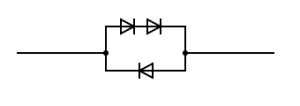
The big difference in what this does sonically is that with symmetrical clipping, the top and the bottom of the sound wave will be evenly clipped, leading to a more uniform sound. With asymmetrical clipping, the top and bottom of the sound wave are clipped differently, meaning the peaks and the troughs of the wave sound slightly different.
It can be hard to explain the difference in the sound between the two types of clipping, but to me asymmetrical clipping sounds slightly more natural and organic than symmetrical clipping because of the differences in clipping between the top and bottom of the wave; overall there’s more variance to asymmetrical clipping. Meanwhile, symmetrical clipping is a smoother and more uniform clipping.
I’ve also read that asymmetrical clipping can have a bit more clarity to the sound while symmetrical clipping gets a bit more compression and sustain, and I mostly agree with this description.
Personally, I find asymmetrical clipping to sound more natural, like an old tube amp getting pushed too far. Symmetrical clipping has the sustain to it, but it sounds a bit more manufactured (but not in a bad way). Overall, it’s a relatively subtle difference, and each has its place.
Enjoying This Component Guide?
Learn more about diodes and other guitar pedal components.
Guitar Pedals With Symmetrical And Asymmetrical Clipping
Obviously I’m not going to list every guitar pedal here and go through how it’s clipped. A lot of guitar pedal manufacturers will list whether the pedal uses symmetrical or asymmetrical clipping. In fact, some companies have pedals that allow you to switch between the two.
However, the two biggest names with the difference in clipping are the Boss OD-1 and the original Ibanez Tubescreamer. I haven’t done anything on the OD-1 yet, but here’s the Ibanez Tubscreamer schematic if you’re interested. It has symmetrical clipping. Meanwhile, the OD-1 has asymmetrical clipping.
Boss came out with the OD-1 first, and when they released it, they released it with asymmetrical clipping. That was 1977. In 1979, Ibanez released the first Tubescreamer, the TS808; this has symmetrical clipping. I’ve heard different reasons why Ibanez chose to go symmetrical. Some say that Boss had a patent on the asymmetrical clipping design, some say they wanted to differentiate themselves from Boss, or maybe that’s just how Ibanez wanted to design the pedal. But either way, these two pedals, pretty much the original overdrive pedals, are excellent examples of symmetrical and asymmetrical clipping in overdrive pedals.
This may sound lazy, but there are plenty of videos out there of these two favourite guitar pedals side by side. Have a listen now that you know the difference between how they work!
Related posts:
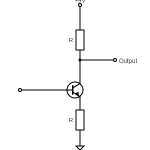 What Is Gain (And How It’s Different From Volume)
What Is Gain (And How It’s Different From Volume)
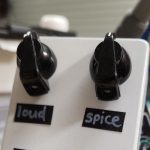 How Does A Drive, Gain, Or Distortion Knob Work?
How Does A Drive, Gain, Or Distortion Knob Work?
 What’s The Difference Between Overdrive, Distortion, And Fuzz?
What’s The Difference Between Overdrive, Distortion, And Fuzz?
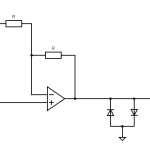 How To Use A Distortion Or Overdrive Pedal
How To Use A Distortion Or Overdrive Pedal
 How Do Guitar Pedal (And Guitar) Volume Knobs Work?
How Do Guitar Pedal (And Guitar) Volume Knobs Work?
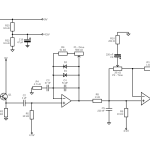 How To Find The Audio Signal Path For A Guitar Pedal
How To Find The Audio Signal Path For A Guitar Pedal
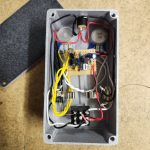 How Do Guitar Pedals Work?
How Do Guitar Pedals Work?
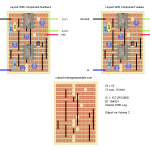 EarthQuaker Devices Acapulco Gold On Stripboard
EarthQuaker Devices Acapulco Gold On Stripboard
 Greer Amps Green Giant On Stripboard
Greer Amps Green Giant On Stripboard
 What Do Guitar Pedals Do?
What Do Guitar Pedals Do?

